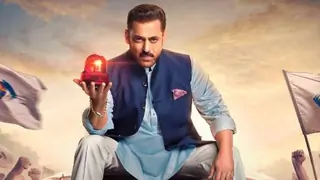Many jazz musicians have derived inspiration from the music of the Indian subcontinent. However, most of them stopped short of the necessary immersion in the tradition which would have brought them to a grasp of Indian formal structures. By and large they are satisfied to noodle modally (sometimes with great inspiration to be sure) over vamp structures. But Indian listeners tend to find these extemporizations undisciplined.
Note that Hindustani music has no exact synonym for "improvisation." Rather, there are a variety of different types of "musical behavior" which involve spontaneous generation of musical lines -- but these behaviors are to be presented in a rough sequence of escalating musical intensity (i.e. slow lines for the most part precede fast lines, wide- ranging lines come after lines in a restricted range, complex rhythms come after simple rhythms, etc.).
Among the words used by Hindustani musicians to describe improvised musical behavior are ones which translate, roughly, as:
"development"
"spreading" (as in spreading a pat of butter over bread -- refers to taking a small amount of tonal material and systematically elaborating it over a long period of time)
"keeping happily occupied"
"playing games with different rhythms"
"sparkling"
With few exceptions the jazz players who've been involved in Hindustani music haven't done it long enough to really get the structural message involved; people who studied with a particular master for a year and claim to have a lock on the style are like folks who read the menu and claim to have eaten the meal. Well I've been studying the tradition of Hindustani classical music for last 15 years and every day I find there's still lot more I don't know!
The same holds true in reverse for Indian musicians who attempt work in a jazz context. Most of them couldn't tell Coleman Hawkins from Lester Young with a ten-foot pole -- and don't see what it has to do with their "fusion" experiments anyway.
Jazz players who want to work with Hindustani music need to know the streams of tradition and achieve at least minimal structural competence in "pure" performance (and be able to recognize structural elements as well as styles of performance). Indian players who want to work with jazz need to commit to the same level; while they may not need to do convincing improvisations on "Confirmation" they should at least be able to recognize Bird's sound, follow the logic of his improvisation, and have an intuitive sense of his place in the tradition.
This raises some interesting issues: what exactly should musicians engaged in "fusion" experiments attempt to get out of the music they're fusing? At one extreme, I believe Nicky Skopelitis (a Laswell-associated guitarist) has said that when he uses instruments from different musical traditions (baglama, saz, etc.) he's not trying to approximate the tradition at all, just to get a new sound that he can use in his music. This strikes me as a healthy approach. I also think great innovations can result from creative "misunderstanding" --Coltrane's Indian-influenced work may not have had much to do with Indian music, but it was important, and I believe Miles Davis said that he wanted the piano on Kind of Blue to sound like African thumb piano!!
Then there's the approach of playing with musicians who've been trained in other traditions--Evan Parker's "Synergetics" gives an example of this, with free- improvising musicians (many of whom now primarily do free improv, and not "traditional" music) who I believe have roots in South African, Sardinian, Tuvan, Korean, and jazz traditions--judging from the instruments if nothing else. McLaughlin's Shakti is probably a more obvious example.
What do you think about these different approaches?






























